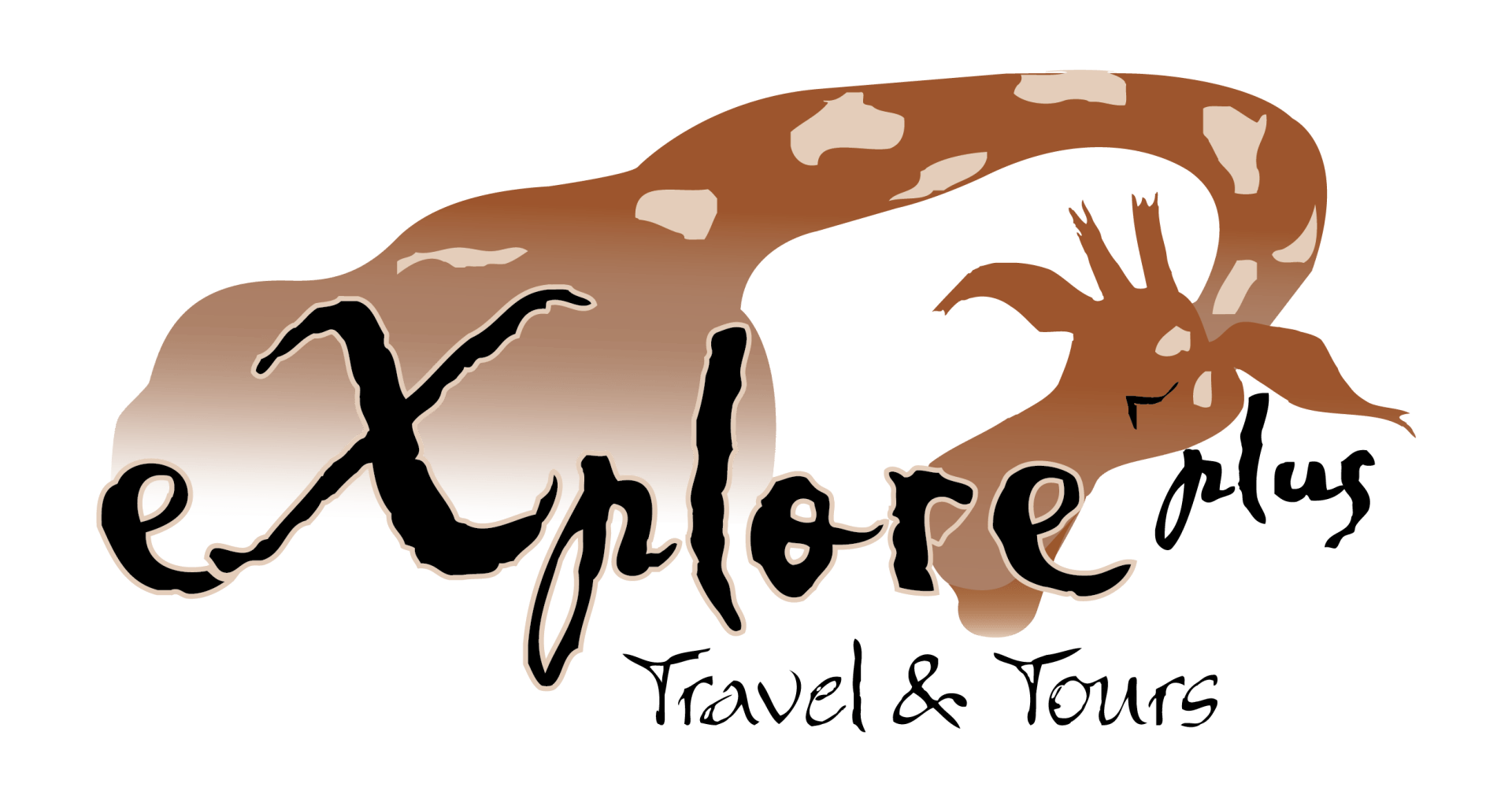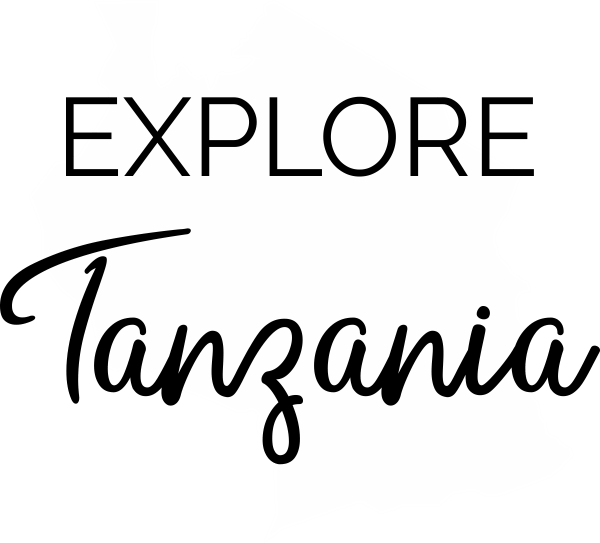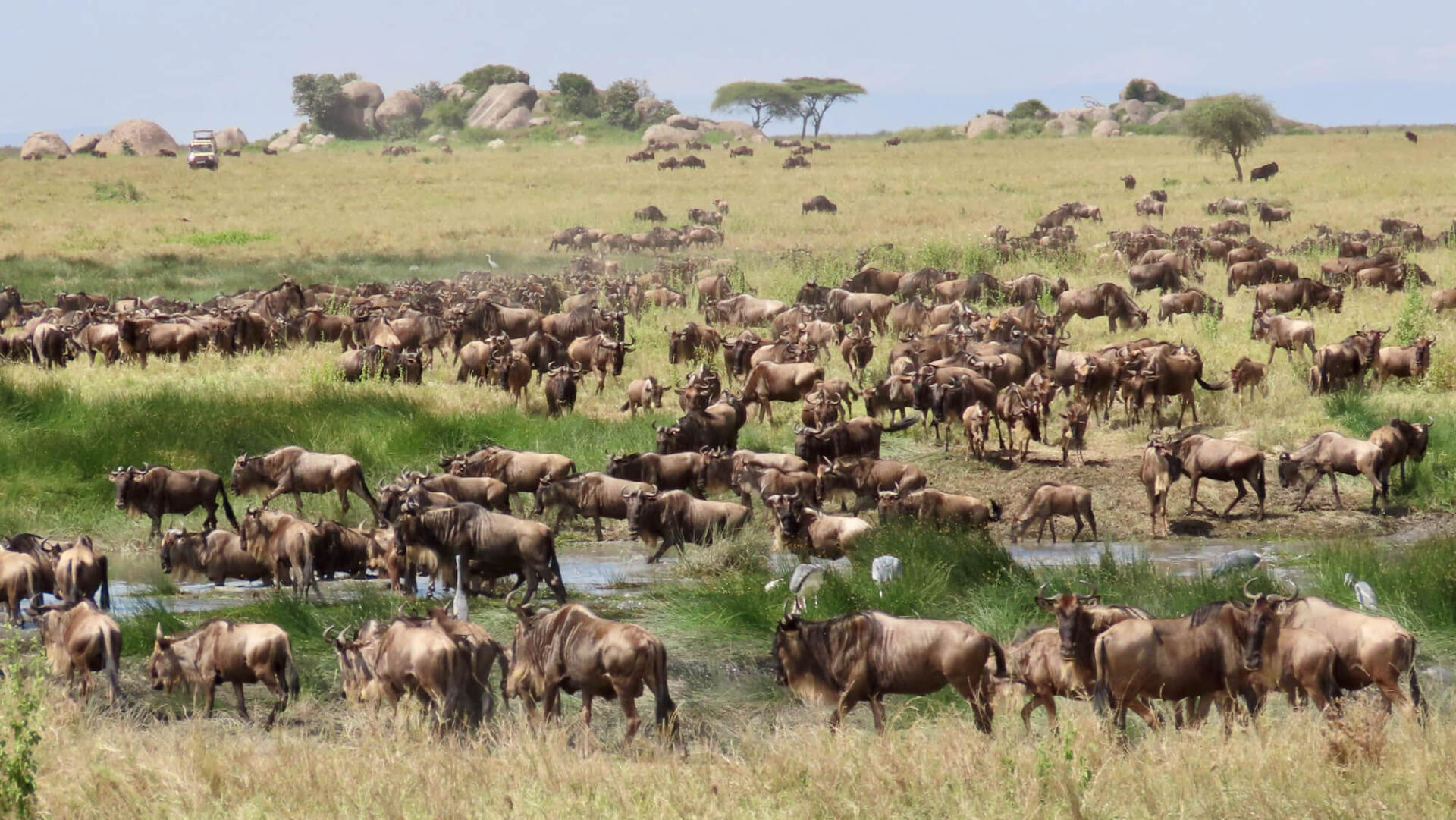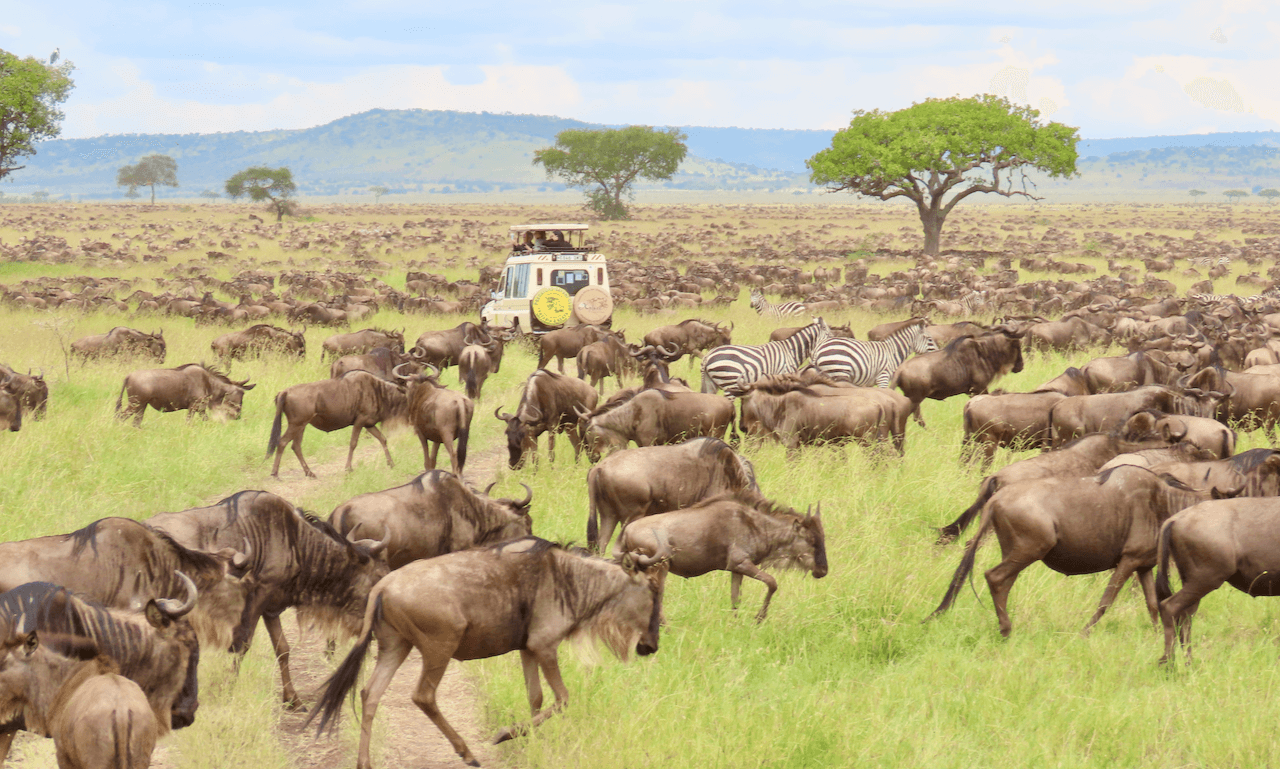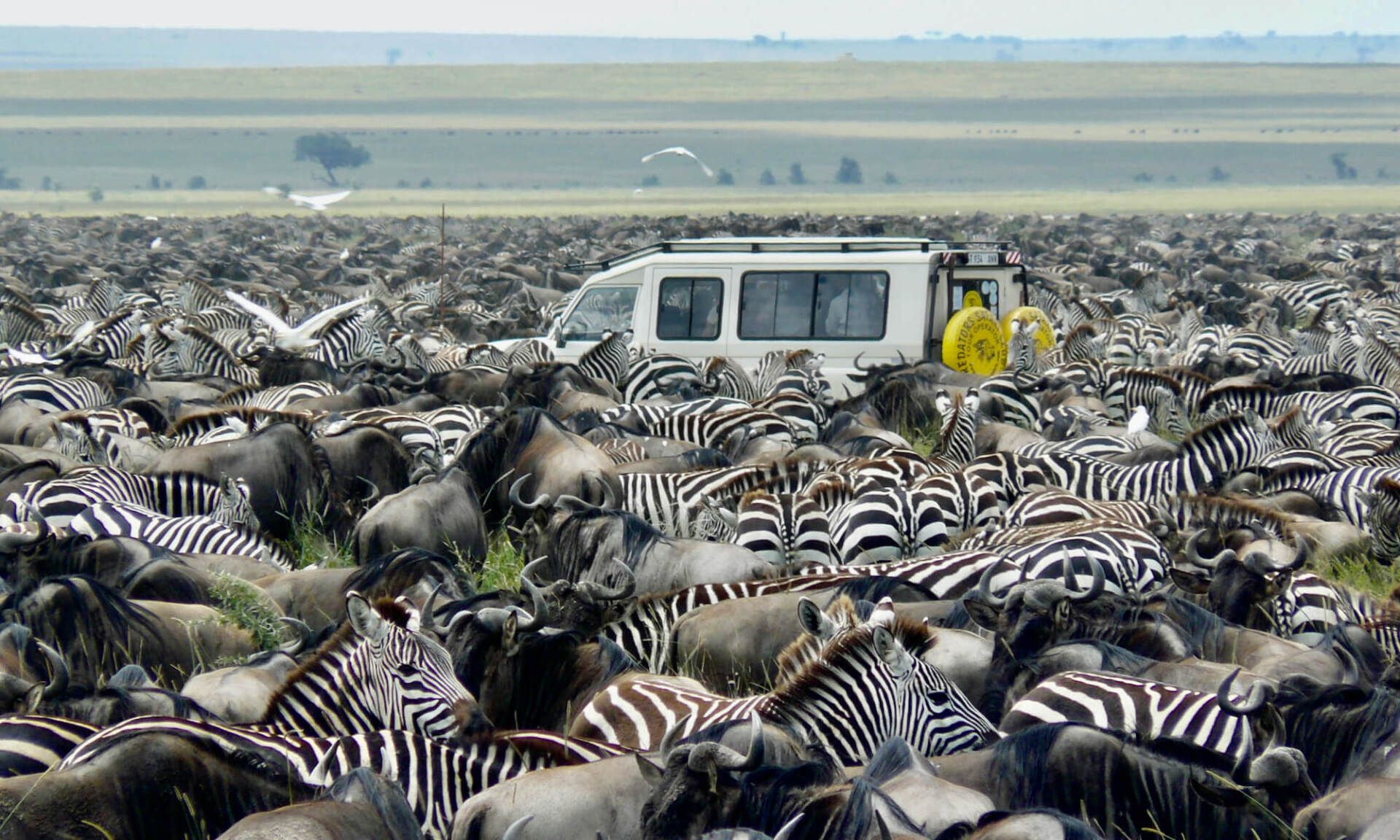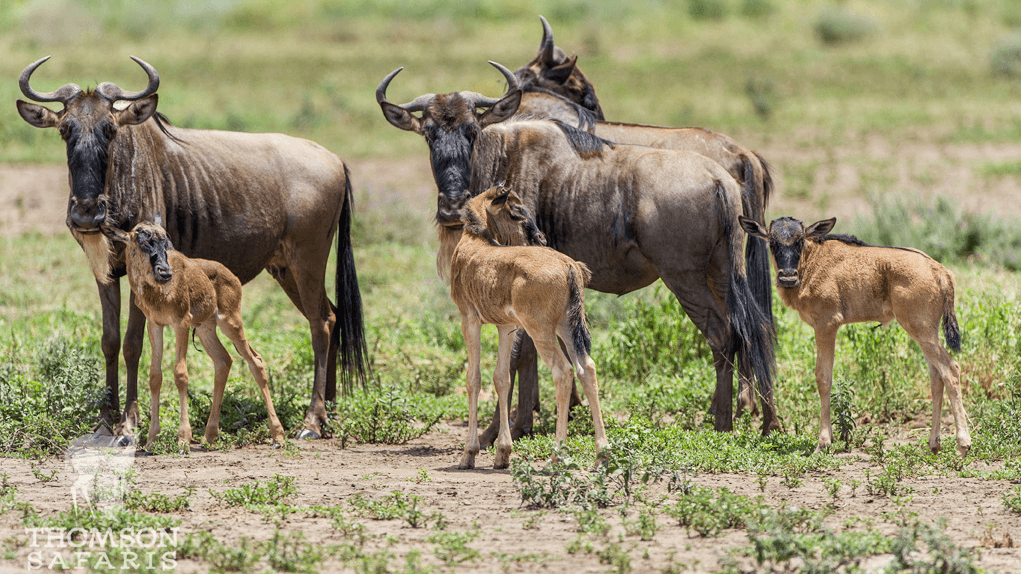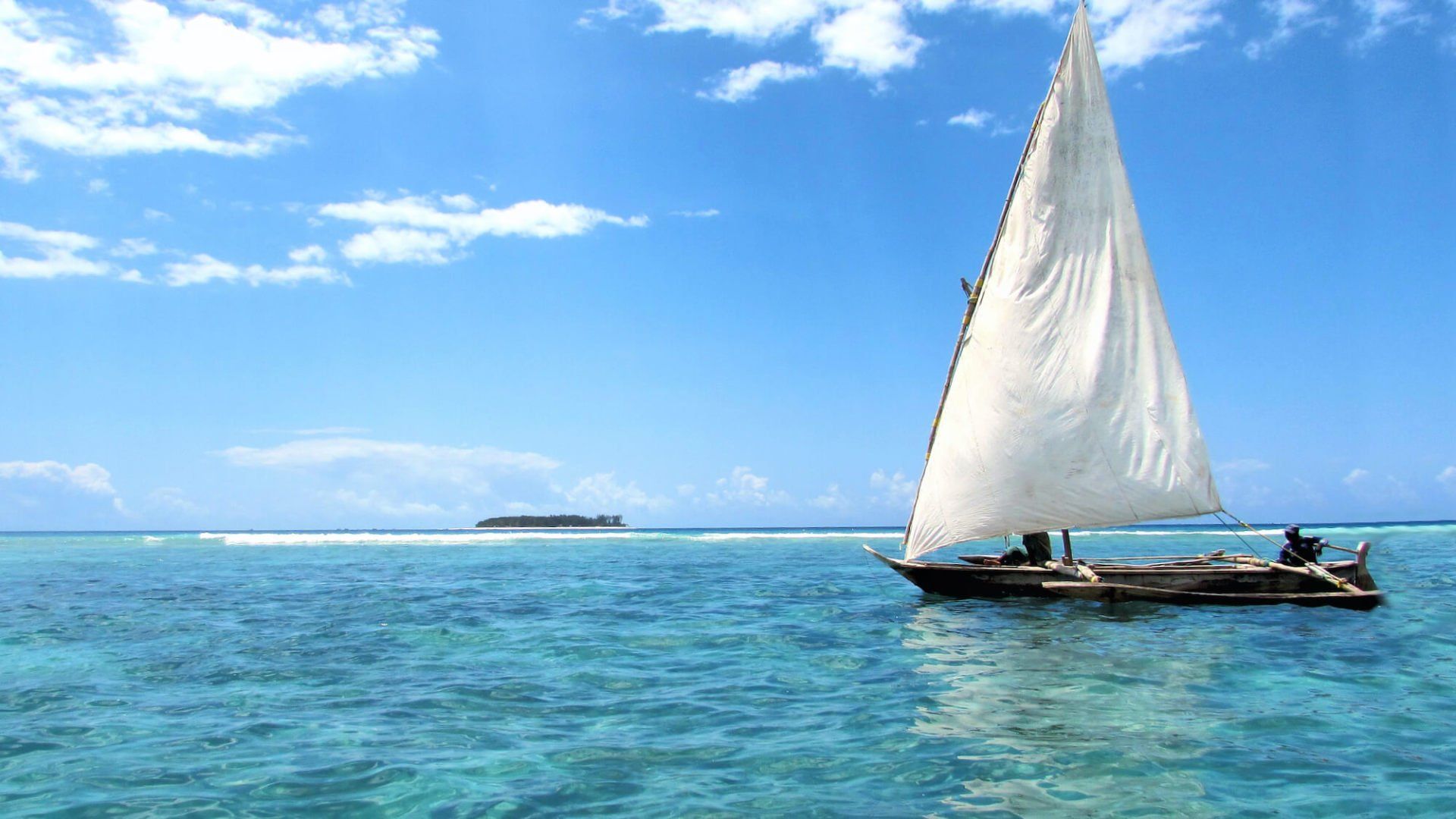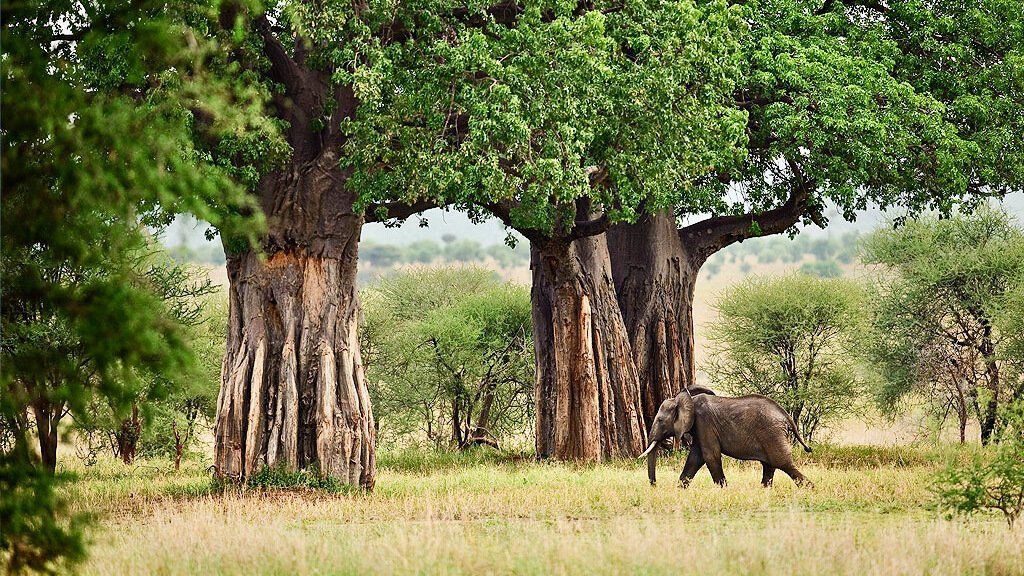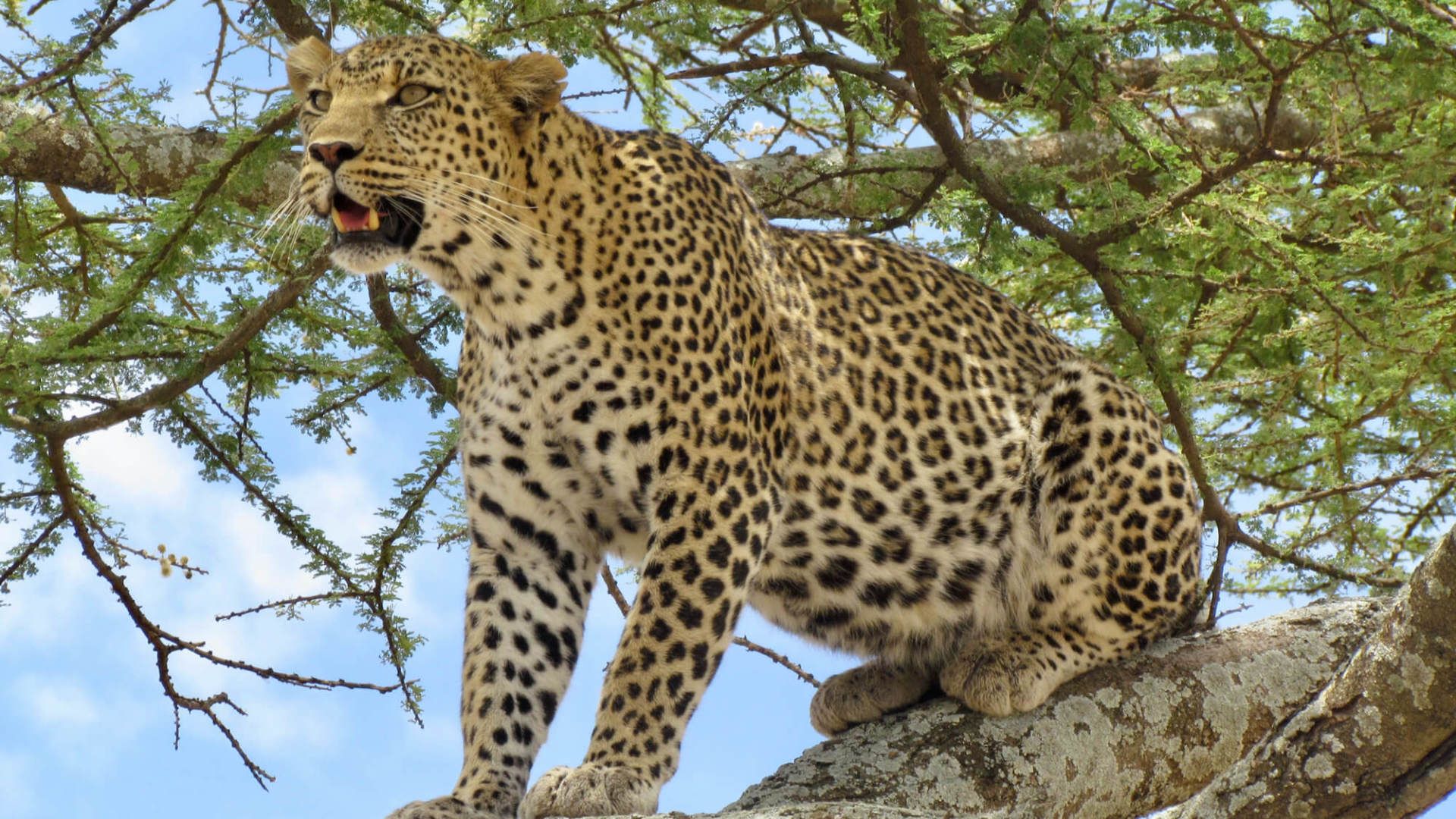The
Great Wildebeest Migration is one of the world’s most thrilling, intriguing and spectacular displays of wildlife behaviour. Join us for an unforgettable
eight-day safari adventure during
August and September and enjoy the best of what Tanzania has to offer! We will explore the scenic
Tarangire National Park , the wildlife-teeming
Ngorongoro Crater, Central Serengeti and the
Northern Serengeti to witness the wildebeest migration, dramatic
river crossings and see predators at the
Mara River .
Our small group safaris offer the opportunity to explore Tanzania while enjoying the company of an intimate group of like-minded safari enthusiasts, on a set itinerary.
Itinerary
-
Day 1: Kilimanjaro Airport / Arusha
Our friendly safari team will welcome you to Kilimanjaro Airport, and they will transfer you to Arusha. Arusha is one of the major coffee-growing regions in Tanzania.
Stay: Kahawa Lodge
Meals: Dinner & breakfast
-
Day 2: Arusha / Tarangire National Park / Lake Manyara
After breakfast, we meet our guide for a short briefing. We head off to Tarangire National Park, known as the land of giants - elephants and baobab trees. The landscape is ironically African with open Acacia woodlands and Baobab trees scattered all over the area. It has the greatest concentration of wildlife outside the Serengeti ecosystem.
Late afternoon we travel towards the local town of Mto Wa Mbu (Maasai for Mosquito Village – the only place in Tanzania which represents all tribes – 120 ethnic groups). We continue to drive up the Rift Valley escarpment to our lodge, perched on the edge of the Rift Valley with distant views over Lake Manyara.
Stay: Lake Manyara Serena Safari Lodge
Meals: Picnic lunch, dinner & breakfast
-
Day 3: Lake Manyara / Ngorongoro Crater
After breakfast, we drive from Lake Manyara with a stop at the African Galleria (for shopping Tanzania art, Masaai blankets, memorabilia, and Tanzanites), before driving to the Crater to enjoy an extended game drive along the Crater floor. A steep entry track leads us 600m down to the magnificent Ngorongoro Crater floor (referred to as the Garden of Eden). A big drawcard to this picturesque park is its dense population of predators, which includes lions, hyenas, jackals, and the ever-elusive leopard. People like to visit the crater at this time of year because of the large likelihood of encountering the Big 5. Late afternoon ascent to the crater rim with a short drive to your camp, enjoying views of the surrounding highlands which form together with the Crater one of Africa's most beautiful regions.
Stay: Ngorongoro Serena Safari Lodge
Meals: Picnic lunch, dinner & breakfast
-
Day 4: Ngorongoro Crater / Serengeti National Park (Central)
After breakfast, we continue our journey to the Serengeti National Park with the option to visit a Maasai village near Ngorongoro Crater (own account). After bidding the Maasai farewell, we continue our journey to the Central Serengeti with game viewing as we make our way towards the camp. The Central area encompasses the world-famous Seronera Valley which is known for its prime wildlife-viewing opportunities. You can visualise the meaning of the word ‘Serengeti’ at this point – which means the ‘endless plains’ in Maasai. The Serengeti - is renowned for its incredible concentrations of predators and the Great Migration of more than 1,5 million wildebeest and hundreds of thousands of zebras.
Stay: Signature Serengeti Tented Camp
Meals: Picnic lunch, dinner & breakfast
-
Day 5: Central Serengeti / Northern Serengeti
We explore more of the Central Serengeti before we are off to our next location in the Northern Serengeti, Kogatende. The Seronera is often referred to as 'big cat country, and its kopjes and acacias provide an excellent opportunity to spot a pride of lions, cheetahs, and leopards. We drive towards the beautiful Northern Serengeti enjoying en-route game viewing. The Northern Serengeti is virtually unexplored. With spectacular landscapes and magnificent wildlife, it offers an incredible and unforgettable Serengeti safari experience.
Stay: Mara Under Canvas.
Meals: Picnic lunch, dinner & breakfast.
-
Day 6 & 7: Northern Serengeti
Balloon Safari - optional
Enjoy two full days in Serengeti with game drives. You can do a game drive from sunrise to sunset, take a picnic lunch, or choose to explore more leisurely, coming back to the camp for lunch and doing a morning and afternoon game drive. Explore more of what the Serengeti offers and enjoy the greatest safari spectacle in the world – the great wildebeest migration as herds of wildebeest gather at the Mara River to cross! During this period herds are crisscrossing between the Masai Mara and the Serengeti on a regular base.
Stay: Mara Under Canvas.
Meals: Picnic lunch, dinner & breakfast.
-
Day 8: Northern Serengeti / Arusha / Kilimanjaro Airport
Check-out at the camp after a packed safari filled with endless memories and sightings and drive to the airstrip for our flight by light aircraft to Arusha where we stop at the Cultural Heritage Centre (for shopping of Tanzania art, memorabilia, and Tanzanites), and enjoy our picnic lunch. Our safari adventure comes to an end as we drive to Kilimanjaro Airport.
End of service
- Airport transfers
- Accommodation in Arusha with dinner & breakfast
- Accommodation on safari on a full board basis (breakfast, lunch & dinner)
- 4x4 stretched Land Cruiser safari vehicle (maximum 6 clients per vehicle)
- 1x Ngorongoro Crater tour
- Unlimited kilometres on game drives during the safari
- Flight by light aircraft from Northern Serengeti to Arusha
- Services of your professional and knowledgeable Tanzanian English speaking driver/guide
- All national park entry fees
- Comprehensive support from our operational office in Tanzania for the duration of the safari
- International Flights.
- Entry visa to Tanzania
- Travel Insurance (Highly recommended)
- Meals and drinks not specified
- Laundry services
- Gratuities to the driver/guide, hotel staff & porters
- Maasai Boma visit fee
- Balloon safari
- All expenses of personal nature
- Malaria – Tanzania is a malaria area
Dates & Prices
Dates:
SMALL GROUP DEPARTURE DATES:
This 08-Day Central Serengeti Group Safaris depart during May on set departure dates.
03 - 10 Sep 2025
06 - 13 Sep 2025
Rates:
| SA RESIDENTS: | INTERNATIONAL: | |
|---|---|---|
| Sharing: | R83,955 pp | Please contact one of our consultants |
| Return flight from Johannesburg: | R11,445.00 pp |
- Exchange rate used (bank selling rate): R18.80 to US$1.00
- Request a quote from our Safari Specialists for the most current rates and availability on our group departures.
- Please treat all pricing as a guide only.
- All rates are subject to increases beyond our control, including fuel price, government taxes and exchange rate fluctuations.
- Maximum
18 clients per safari , with a maximum of
6 clients per vehicle.
National Parks
Tarangire National Park
Tarangire is a long, thin park covering 1,360 sq. km, roughly running north south along the line of the Tarangire River. It is made up chiefly of low-lying, rolling hills on the Rift floor, its natural vegetation of acacia woodland and giant baobabs only altered by huge areas of swamp. The swamps of black cotton mud produce rich grasslands, while the watercourses are lined by huge trees, including sycamore fig, tamarind, and sausage trees.
Ngorongoro Crater
Serengeti National Park
The Serengeti’s endless plains is a UNESCO World Heritage Site and is patrolled by Africa’s big cats, elephants, buffaloes, gazelles and giraffes and is perhaps most famous for the migration of animals. The principle players are the wildebeest , whose numbers appear to have increased to about 2 million . In addition, about 250,000 zebras make the seasonal journey to fresh pastures, first to the north, then the south after the rains. Their ancient instinct to move is so strong that no drought, gorge or crocodile-infested river can hold them back.
Bird watching in the Serengeti is good all year round, at its very best from November to April. This is when European and North African migratory birds are present for resident species.
Serengeti North
The far north of the Serengeti National Park is where you'll find the wildebeest migration between August and October . The Mara River - bristling with crocs - divides this wild part of the Serengeti from the Masai Mara in Kenya and it's here that you'll find the herds when the southern plains get too dry. The northern section of the Serengeti looks entirely different from the south and western areas. The North is an area of gentle undulations cut by numerous streams, which reveal the underlying granites in the area. A good stretch of the Mara River cuts right through this northern area of the Serengeti, a stunning region of kopjes, open plains, sporadic woodland and riverine vegetation. One of the sights people mainly hope to see is the wildebeest crossing the Mara River , most likely between July and October , depending on weather, as the herds spend a good deal of time crossing the Mara back and forth in search of the best grazing.
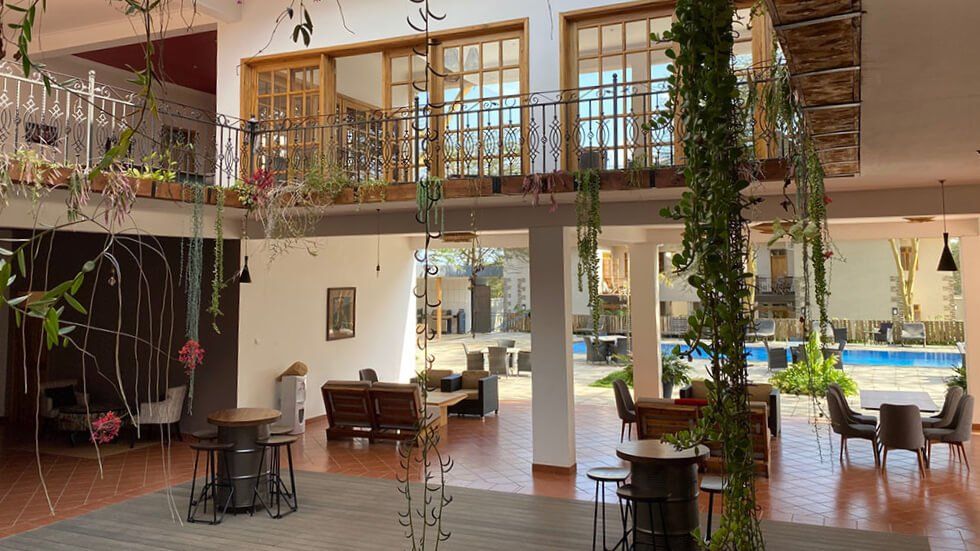
Slide title
Kahawa House - Arusha Town
Button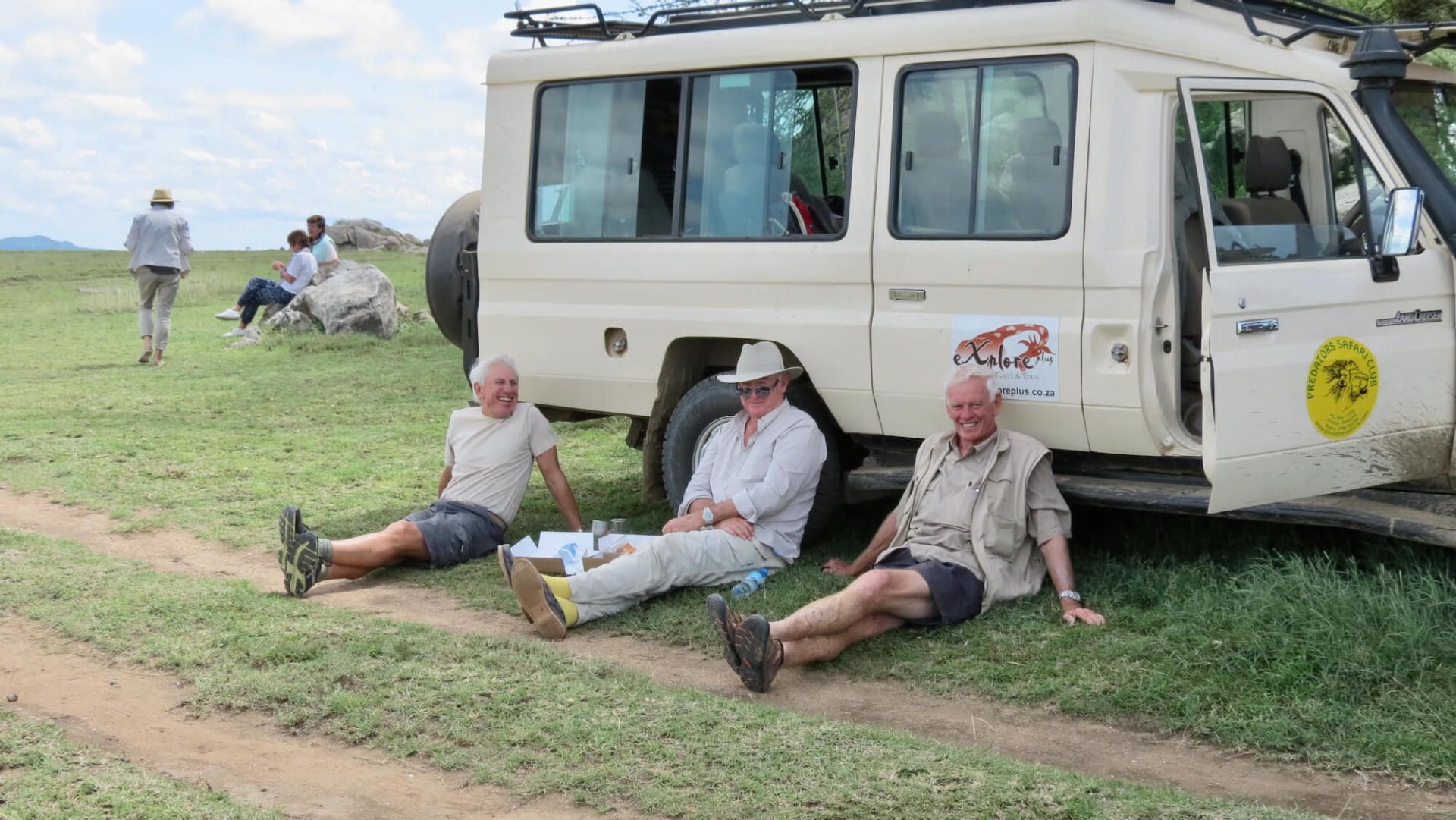
Slide title
Serengeti National Park - Picnic lunch
Button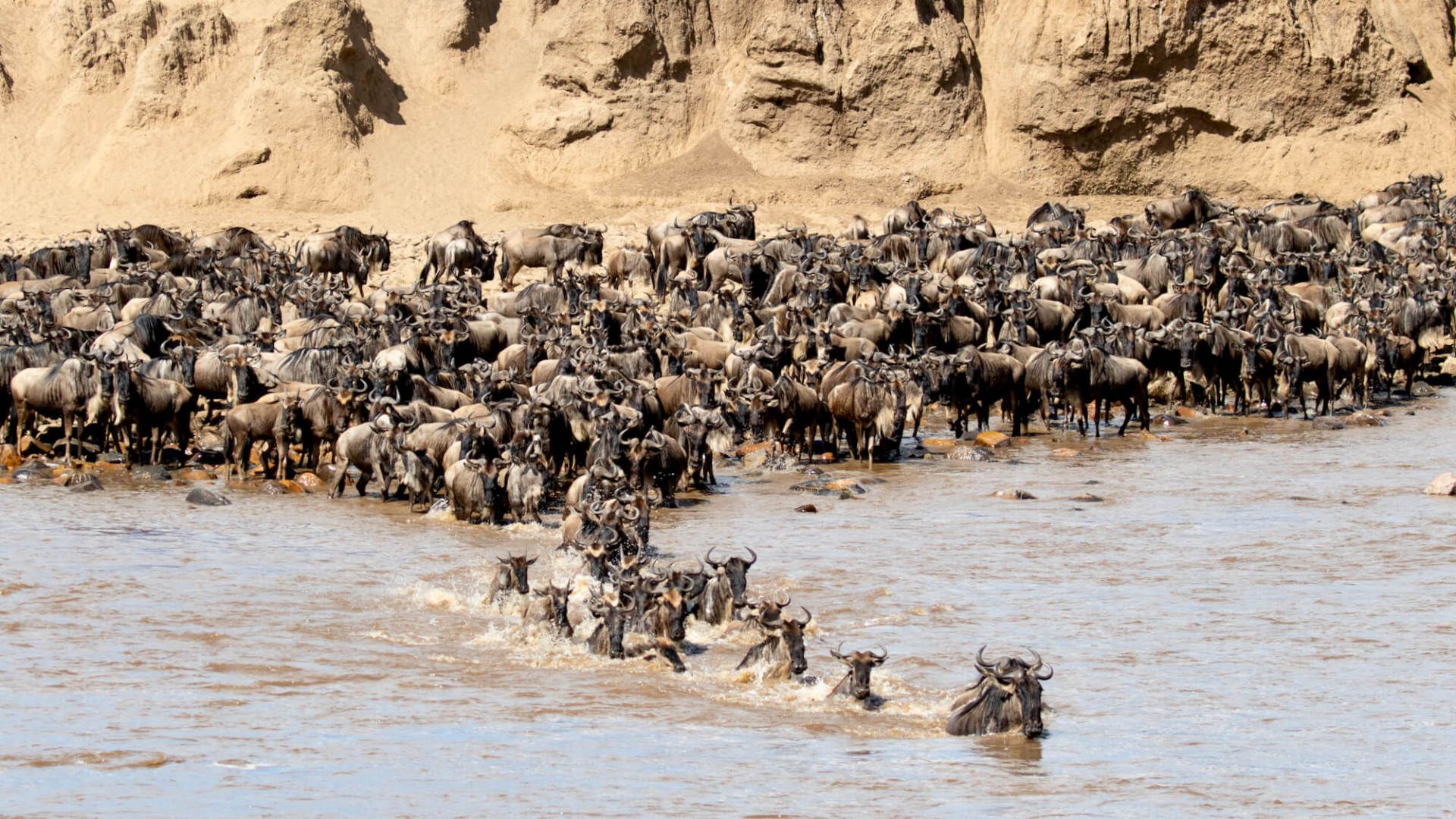
Slide title
Mara River - Wildebeest Migration River Crossing
Button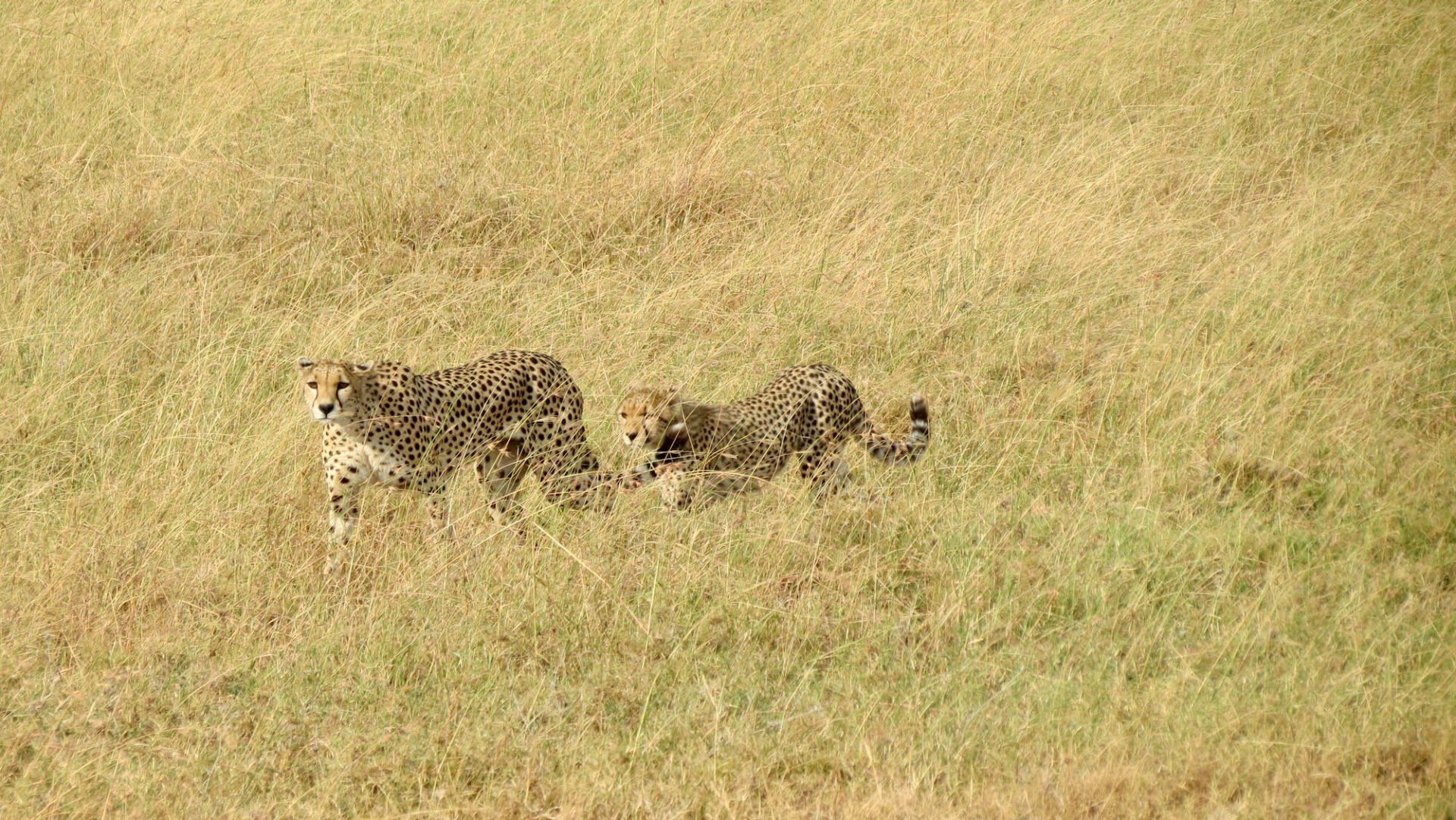
Slide title
Cheetahs on the Serengeti Plains
Button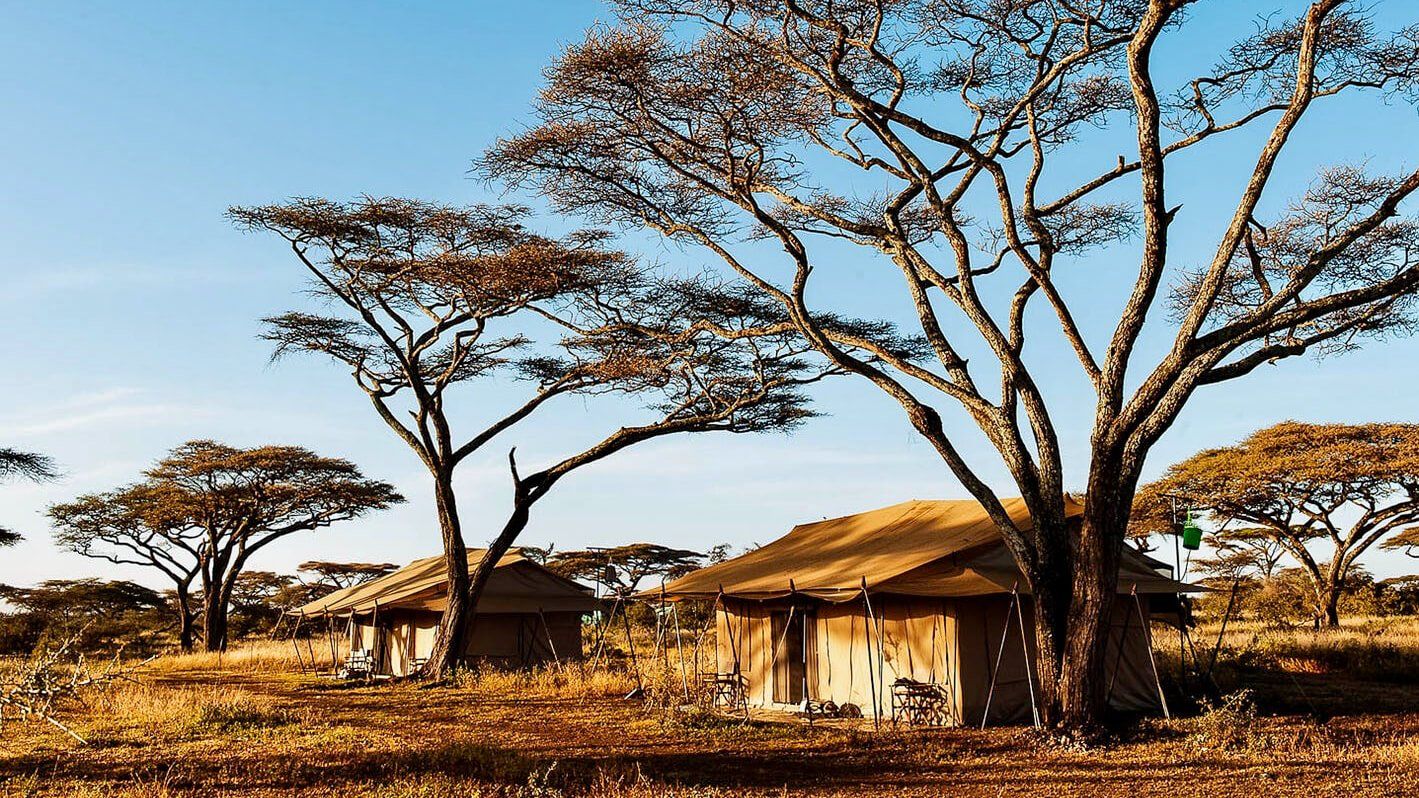
Slide title
Mara Under Canvas
Button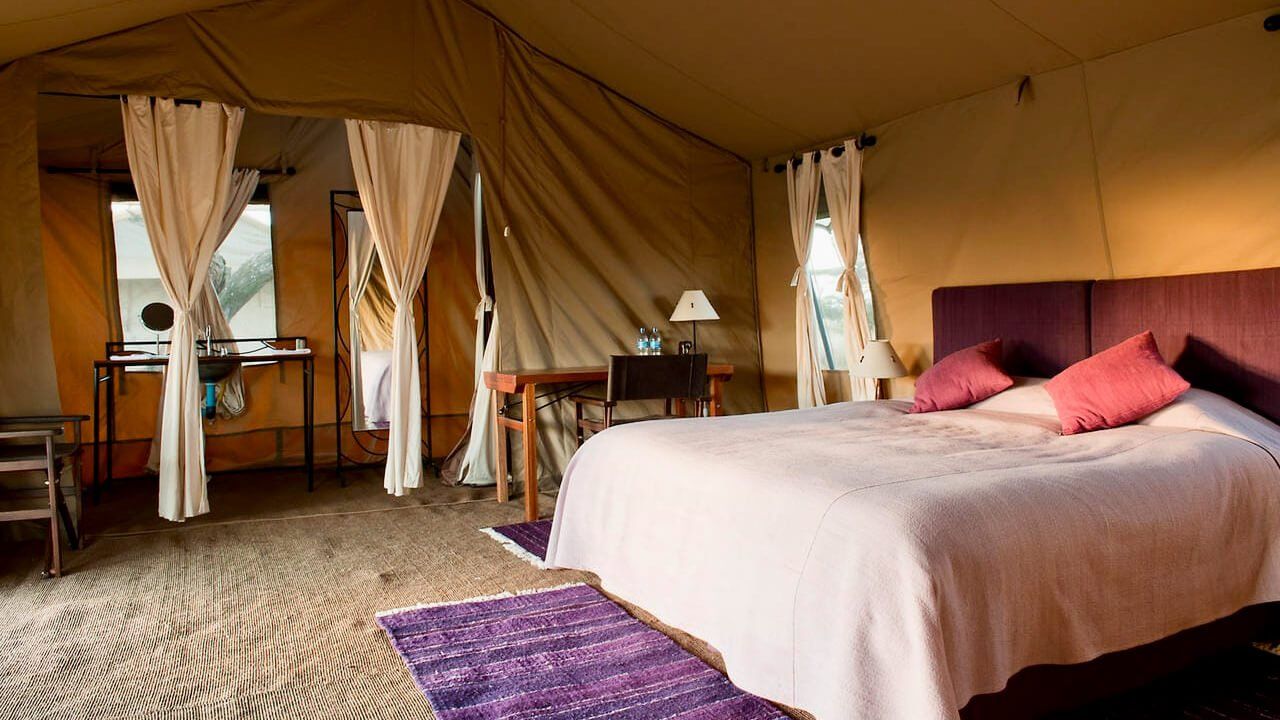
Slide title
Mara Under Canvas - Guest Tents
Button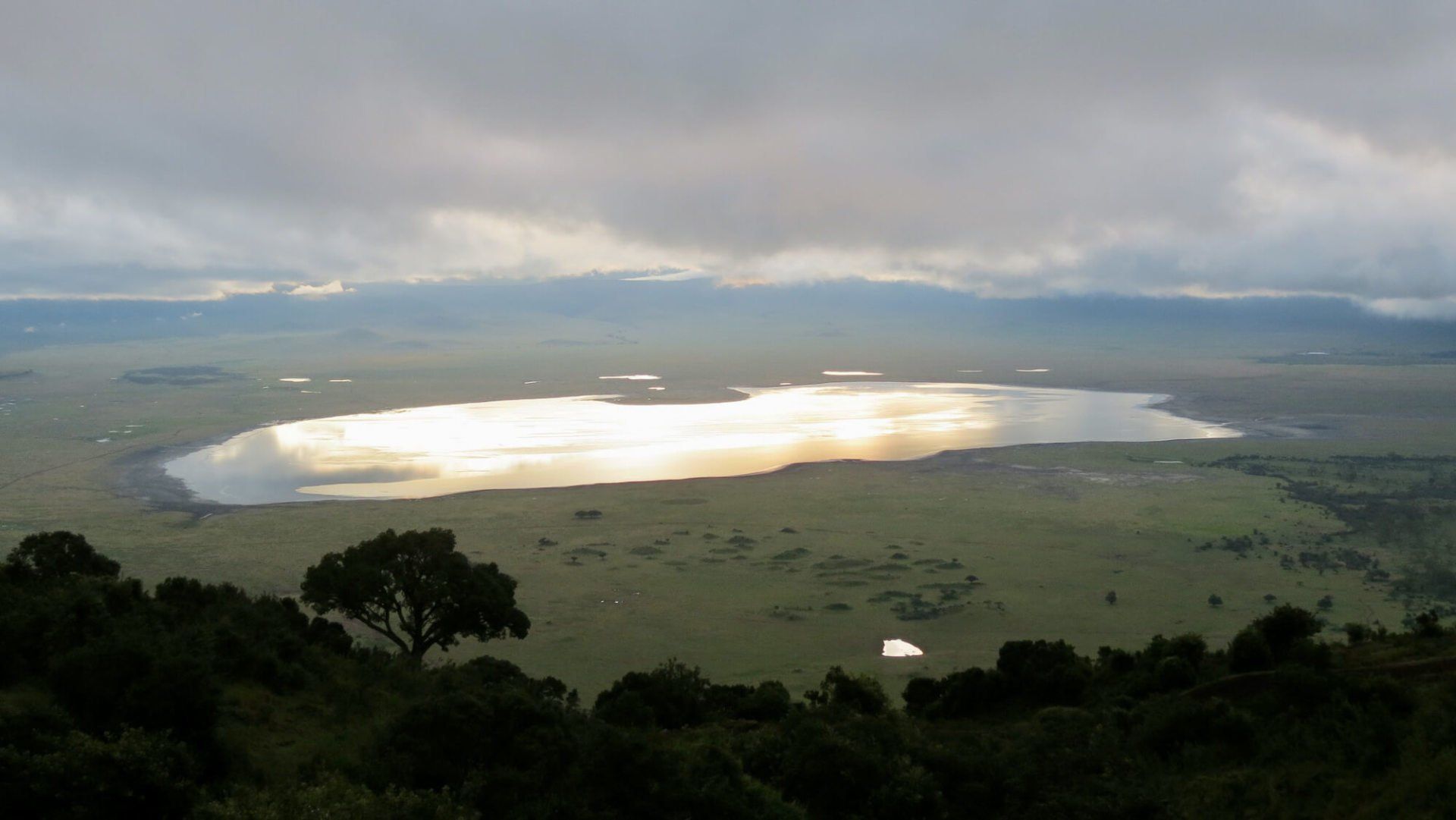
Slide title
Ngorongoro Crater - Lake Magadi
Button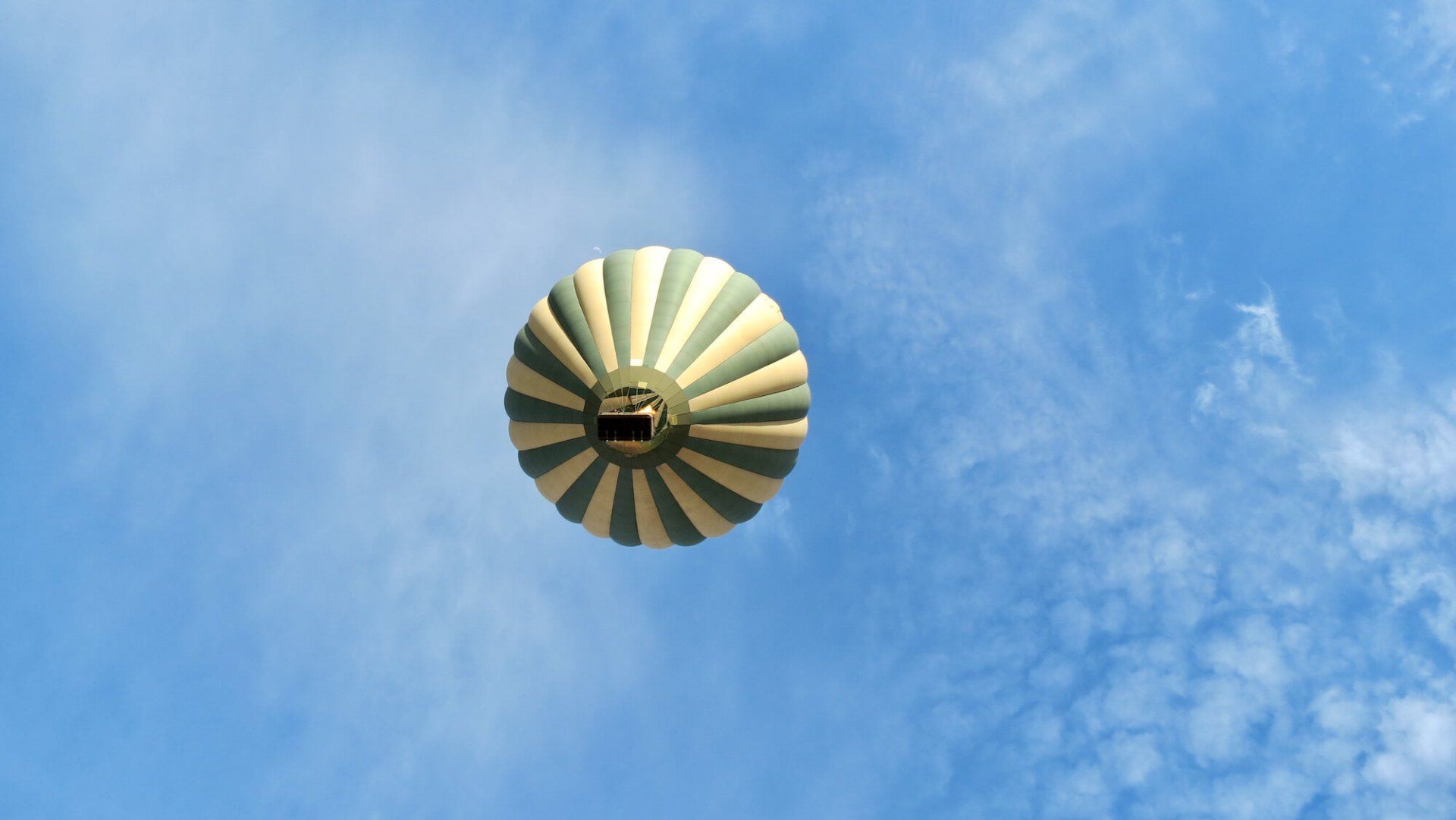
Slide title
Serengeti Balloon Safari
Button
SERENGETI MIGRATION GROUP SAFARI
GROUP SAFARI - VERY POPULAR!
8 days / 7 nights
Highlights: Serengeti NP / Ngorongoro Crater / Tarangire NP
Date: April & May 2025
EXPLORER MIGRATION SAFARI
GROUP SAFARI!
7 days / 6 nights
Highlights: Serengeti NP / Ngorongoro Crater / Tarangire NP / Road & fly safari
Date: 07 - 13 May 2025
ULTIMATE SERENGETI MIGRATION SAFARI
SOLD OUT!
GROUP SAFARI!
8 days / 7 nights
Highligts: Serengeti NP / Ngorongoro Crater / Tarangrire NP /
Road & fly safari
Date: 14 - 21 May 2025
TASTE OF TANZANIA SAFARI
GROUP SAFARI - VERY POPULAR!
7 days / 6 nights
Highlights: Serengeti NP / Ngorongoro Crater / Tarangire NP
Date: 12 - 18 May 2025
WILDEBEEST CALVING AND PREDATORS SAFARI
7 days / 6 nights
Highlights: Serengeti National Park / Ngorongoro Crater / Tarangire NP
Date: Private Safari
ULTIMATE TANZANIA SAFARI
12 days / 11 nights
Highlights: Tarangire / Ngorongoro / Serengeti / Zanzibar
Date: Private Safari
OFF THE BEATEN TRACK SAFARI
8 days / 7 nights
Highlights: Nyerere NP (formerly Selous NP / Ruaha National Park
Date: Private Safari
NYERERE NATIONAL PARK SAFARI
SA RESIDENT SPECIAL
5 days / 4 nights
Highlights: Nyerere National Park
Valid between: Private Safari
BEST OF EAST AFRICA SAFARI
11 days / 10 nights
Highlights: KENYA - Lake Naivasha / Masai Mara / Amboseli NP
TANZANIA - Serengeti NP / Ngorongoro Crater / Lake Manyara
Date: Set departure dates
What Our Clients Say About Our Safaris & Tours
SIGN UP FOR OUR NEWSLETTER
Africa is calling – Sign up to our newsletter today!Get exclusive access to the latest on exclusive offers, getaways and travel inspiration.
Contact Us
We will get back to you as soon as possible
Please try again later
Copyright © 2024 Digital Zoo Website Design Company - All Rights Reserved
Domain Registration
|
Email Address
|
Website Design
|
Graphic Design
|
Social Media Management
|
Search Engine Optimization
|
Online Marketing
|
Web App Developer
All Rights Reserved | Explore Plus Travel & Tours
All Rights Reserved | Explore Plus Travel & Tours
